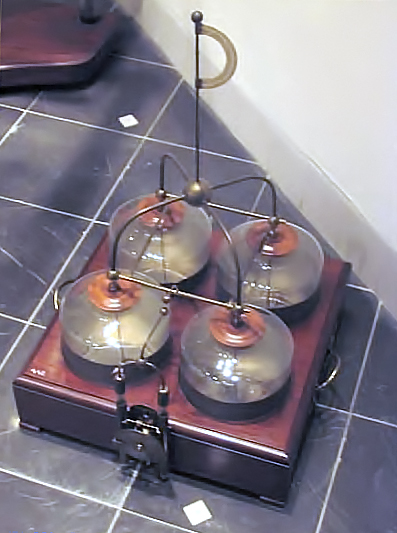- IT HAPPENEDScience
- 11 de October de 2024
- No Comment
- 6 minutes read
The Leyden Jar

IT HAPPENED…
On October 11, 1745
The Leyden Jar


… On October 11, 1745, Ewald Jürgen von Kleist (1700-1748), a Lutheran clergyman, dean of the cathedral of Cammin (Pomerania) and a fan of physics, presented a device of his invention capable of storing electricity through discharges. It was the first capacitor in history made by man. It is known as the Leyden jar.
Electricity is a physical phenomenon consisting of the flow of electric charges, which are, in turn, a physical property of some subatomic particles that manifest themselves through forces of attraction and repulsion between them through electromagnetic fields. Electrically charged matter is influenced by these electromagnetic fields, and at the same time is a generator of them. The existence of “electrical” phenomena has been known since ancient times.
The term comes from the Greek word ήλεκτρον -élektron- which translated means “amber”, precisely because the Greeks observed that rubbing amber with wool or skin produced charges that attracted small objects, and that by rubbing more intensely, sparks could fly. It was also known of the “electricity” produced by certain fish – the Egyptians called them “the thunderers” of the Nile – and that the Romans treated those suffering from gout and headaches with discharges from these fish. Pliny the Elder left us a description of the soothing effects of the discharges of electric rays. The “Magnesia stones” were also known, so called because they were abundant in the surroundings of this Syrian city, deriving the current words magneta – magnet – and magnetite, the element, from that toponym.
Likewise, the first studies on the electrical nature of lightning date back to the Arabs around the 10th century, who named it by analogy with the electric ray – raad, lightning – a term that disappeared in the 15th century. It has also been speculated that the so-called “Baghdad batteries” of the Parthian civilization could have been voltaic cells, although this is now more doubtful. With the Scientific Revolution of the 17th century, the study of electrical phenomena in Europe experienced a notable boost. It is in this context that, already in the 18th century, the Leyden jar appeared.
In fact, there is a dispute over who was the first to make a Leyden jar. Von Kleist had studied at the University of Leyden and presented it on his own, as a member of the Prussian Academy of Sciences. A year later, Peter van Musschenbroek (1692-1761), a professor at this same University, independently of von Kleist, officially presented it to the University. He had been investigating whether water could store electricity, and during one of his experiments, a student grabbed the bottle by the neck and received a strong shock. In any case, and since both came from the same university, it was called the “Leyden bottle.”
The device may seem to us very crude and artisanal by today’s standards, but it is still the first artificial capacitor in history. It consists of a glass bottle partially filled with water, covered at the neck with a cork with a metal rod dipped in water pierced through it. The end of the rod outside the bottle formed a metal sphere. By connecting the sphere to a source of static energy, the bottle was charged. In turn, it could be discharged by connecting its central terminal to a point of zero potential – what we now call ground or earth.
Then the invention evolved. Thin insulating metal sheets were introduced into the outer and inner surfaces of the glass container, and the metal rod passing through the insulator made contact with the inner sheet, producing a dielectric piercing of the air by means of a spark and increasing its effectiveness, but the principle was essentially the same. Very important and decisive practical applications were soon found for using stored static electricity, which in turn produced different types of electrostatic generators, such as the Wimshurts machine or the Ramsden machine.
In 1747, William Watson (1715-1787) discovered that the discharge was increased if the container was wrapped with a layer of tin. In his public demonstration, he transmitted an electric discharge from a Leyden jar to a metal cable that crossed the River Thames, producing discharges capable of killing mice and small birds. In turn, Jean-Antoine Nollet (1700-1770) replaced water with sheets of tin, which was the final configuration adopted by the Leyden jar.
Humanity was beginning to control electricity…
Source: educational EVIDENCE
Rights: Creative Commons

